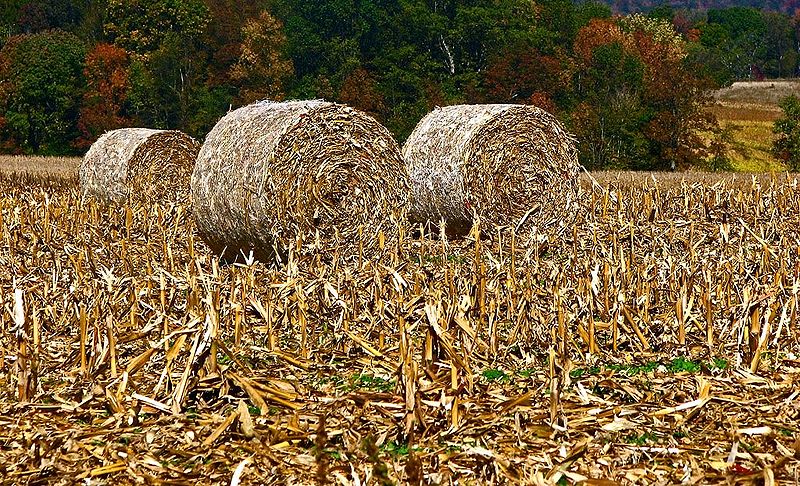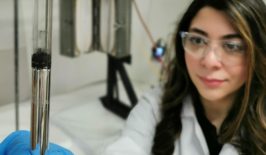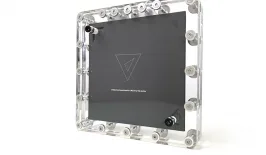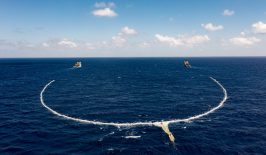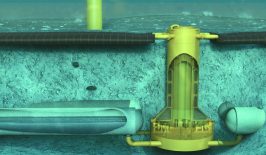Carbon capture and sequestration is becoming quite the hot topic within environmental research and industrial circles. The ability to snatch carbon from the air, and store it in a more sustainable state, could play a role as a major contributor to a global climate change solution. Elon Musk certainly thinks it has potential. The Musk Foundation is currently offering the 100 million USD XPRIZE to any project which can present a scalable plan to sequester 1000 tonnes of carbon a year.
Although carbon capture may seem like the forefront of high tech science, there are also some decidedly low tech solutions to the problem. In fact, Mother Nature may already provide the tools needed. One project, led by NASA award-winning entrepreneur David Mitchel and Nebula award-winning scientist Gregory Benford, hopes to use agricultural waste and the dark depths of the sea as a cheap, and hugely scalable method of carbon sequestration.
The approach, dubbed CROPS (‘Crop Residue Ocean Permanent Sequestration’), is an entry into the XPRIZE competition and builds upon decade old research. The team now hopes to develop it into a workable model based on the idea crops already absorb carbon as they grow. Corn, especially, absorbs more carbon than most other crops and is hugely available across the world. This carbon remains stored in the agricultural waste of corn farming: stalks, roots and leaves known collectively as ‘stover’. As this stover decomposes, that carbon is once again released. The CROPS team now hopes to dump the corn waste somewhere where that can never happen – the depths of the ocean.
At around two to three kilometres deep – around the so-called abyssal plain – the ocean becomes an even colder and more inhospitable place. High pressure, low temperatures (around 4 degrees celsius) and almost a complete lack of oxygen means decomposition occurs extremely slowly. Once sunken onto the seabed, a single bail of corn waste could theoretically take a thousand years to fully decompose, keeping that carbon locked away at the same time.
To test the theory, Mitchel and his team dumped a bail of corn waste 100 kilometres off the coast of Monterey Bay. Sitting at a depth of 2.2 kilometres, it remains in essentially exactly the same state as when it was dropped a decade ago.
Although the effort of collecting, bailing and transporting the corn waste may seem significant, Mitchel believes it is actually much cheaper than other, more high tech versions of carbon capture and disposal. Most of all, there is no need for an expensive carbon capture facility that has a definitive capacity. Mitchel estimates his approach can capture carbon at around 100 USD a ton, while carbon capture plants often run at around 815 USD a ton.
The simpler approach may also be more scalable. The team suggests their method is 90 percent efficient and can grow in conjunction with the expansion of corn agriculture. Mitchel suggests it’s not unrealistic to predict 1 billion tons of carbon being disposed of in this way, if the method is adopted globally.
Deep Sea Dumping
At first glance, the thought of throwing agricultural waste into the ocean might not seem particularly environmentally friendly, but Mitchel suggests there are actually few better places to do it. Although capturing carbon in the form of trees is great, they only on average offer hundreds of years of sequestration and are also prone to fire, disease and other issues. Mitchel told the Denver Gazette that the deep ocean “puts [the carbon] in… almost a perfect stasis of low temperature, high pressure and low oxygen. So, it’s the right combination of where you really want to put something down to last 1,000 years or more.”
There is also a lot of space down there. The area below 3 kilometres covers around 50 percent of the Earth’s surface, so there’s more than enough room for some bales of corn waste. Mitchel stated:
“…the impact on the ocean is almost zero because the ocean is so large. Even if this were done at a billion tons a year for a hundred years, we should be talking less than 0.01% of the total ocean.”
However, the CROPS project is not the only group eying up the abyssal plain as a convenient dumping ground, or source of resources. The same area has been suggested as the disposal site for old ships, oil rigs, munitions, hazardous materials and even nuclear waste. Elsewhere, the deep ocean floor could also provide opportunities for deep sea commercial fishing, mineral extraction or oil drilling. A lack of information about the full biodiversity of the region means it’s difficult to fully assess the ecological impact of these activities. The abyssal plain was long considered to be a lifeless desert, however more recent research has suggested it is in fact a richly biodiverse region, especially in the form of microbial life. Large scale commercial activity could pose the risk of extinction for creatures we do not even know exist yet. The Monterey Bay Aquarium Research Institute has already published research which suggests the oceans plastic pandemic is not limited to the surface and shorelines.
The dumping of corn waste appears to be less damaging than some of these other activities. Despite this, international organisations may do well to monitor who is doing the dumping, and what exactly they are disposing of. Otherwise, there are significant dangers of the deep sea becoming the Earth’s illegal trash heap.
